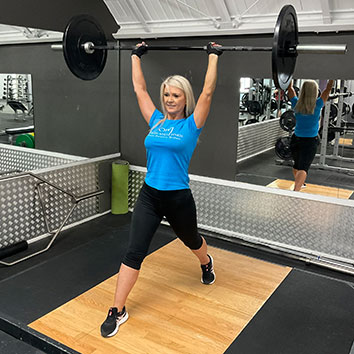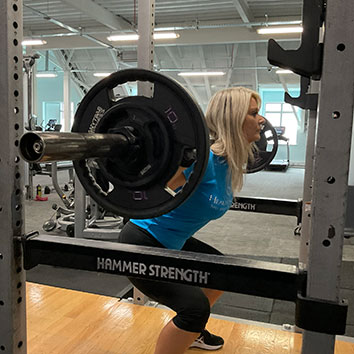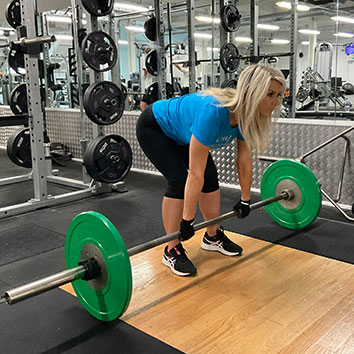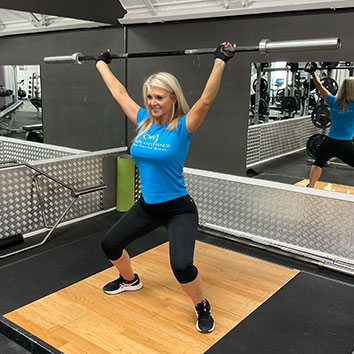|
Strength and Conditioning
Strength and conditioning is the practical application of sports science to enhance movement quality. It is grounded in evidence-based research and the physiology of exercise and anatomy. Everybody benefits from a better quality of movement. Strength and conditioning is a great way to transform your body and achieve tangible results, whether you are a professional or amateur athlete, or just beginning to become more physically active. It comprises much more than just lifting weights and focuses on a variety of tools to improve movement, health and physical performance. Methods include plyometrics, speed and agility, mobility, core stability, endurance, weight training and much more depending on the individual's or team's needs. Strength and conditioning encompasses the entire development of the athlete and the requirements to improve physical performance. Strength and conditioning is not defined by any particular exercise or training modality. There is a general belief that strength and conditioning is all about lifting weights. This could not be further from the truth. To be sure, strength and conditioning is definitely not a hardcore beasting only for athletes, nor is it a particular Olympic lift or prowler push or sprint drill. While some of these training techniques are associated with strength and conditioning training, they are tools used to achieve the goal, not the coaching in itself. There is much more programming and finesse involved; the drill is just a drill and must serve a greater purpose. The two main objectives of strength and conditioning training are improving movement quality to improve performance and preventing injury. While most elite athletes require specialist strength and conditioning training, everybody of all physical conditions and abilities can benefit from the practical application of the coaching and knowledge. The many benefits include: Improved performance A strength and conditioning programme looks to improve an individual's performance over time. Programming is performance-specific using scientifically-supported training methods, backed up by the accurate measurement of results. This applies to any sport with a focus on speed, strength and/or power. Equally, though, it could be improving performance for functional real-life situations, such as standing up with greater facility for older adults. Injury prevention A key pillar in strength and conditioning training is assessing an individual's movement patterns so that correct movement techniques can be used to prevent injuries. Developing better movement patterns helps to prevent injury in athletes, which can help accelerate or extend their career. In real-life situations, this could be helping older adults to improve proprioception and balance to avoid frequent falls. Enhanced general health The combination of resistance training, high intensity interval training (HIIT), plyometrics and cardio conditioning that characterise strength and conditioning training helps to increase cardiovascular health as well as muscular, skeletal and mental health. Strengthen bones Resistance training improves bone density as well as increasing muscle strength. Improved posture With improved movement mechanics comes improved posture. Given today's increasingly sedentary lifestyles, almost everybody can benefit from this. Posture analysis is often conducted as part of an initial assessment, so movement patterns can be developed based on improving functionality for the individual's needs. Improved posture can lead to improved overall physical function, including the respiratory system and circulation. Increased muscle mass and metabolism Strength and conditioning training helps to build muscle, which in turn boosts metabolism as muscle burns more calories at rest. An increase in lean muscle mass reduces the risk of insulin resistance, various factors for cardiovascular disease and other indicators leading to ill health, such as elevated fasting glucose and triglyceride levels, hypertension, obesity and high levels of unhealthy cholesterol. Exercise can become more enjoyable When you move correctly and notice improvements in your movement technique, exercise becomes more enjoyable. This is not only because progress is motivating, but also because strength and conditioning helps to prevent injuries by developing quality movement patterns. A reduced concern with the risk of injury also helps to make training more enjoyable. Faster recovery after injury Whatever training you do, injuries are still possible. Strength and conditioning can assist to ensure the muscles are stronger and more adaptable, which will aid the recovery process. A strength and conditioning coach is able to identify inappropriate or unhelpful movement patterns and advise on how to use exercise to condition your body back to performance. For professional athletes For professional athletes, strength and conditioning will involve a structured, detailed training programme making use of times throughout a seasonal cycle to strategically apply functional-over-training, tapers and rest to optimise the athlete's performance. This training will be based carefully around the performance and skill attributes necessary for the sport. Everything is done for a sport- and athlete-specific reason. A well-designed strength and conditioning programme incorporates appropriate exercise, drills and movement patterns into microcycles (which are the weekly sessions), which in turn form a periodised mesocycle (roughly a training block of one month with perhaps three to six mesocycles focusing on a specific training target), which in turn form part of the overall periodised macrocycle for the year(s). The English Institute of Sport (EIS) describes the performance impact of strength and conditioning as follows: "Research has demonstrated that not only does training improve performance; it also shows that incorrect training can cause decrements to performance. Using techniques such as plyometrics in some high-power athletes and sports-specific movements in others, strength coaches may improve physical function and athletic performance. While these strength qualities vary between sports, athletes within the same sport have different technical and physical strengths and weaknesses and therefore require specific interventions. These specific needs are identified in conjunction with the technical coach and other service providers. Once the specific strength qualities have been identified, they are measured and tracked to ensure that the strength and conditioning programme is effective and achieving its goals. A well-designed strength and conditioning programme, in conjunction with sports medicine support, can increase the athlete's tolerance to training and decrease the chance of injury. This is done through identifying both areas subject to overload during the sport and individual weaknesses in the athletes." |





